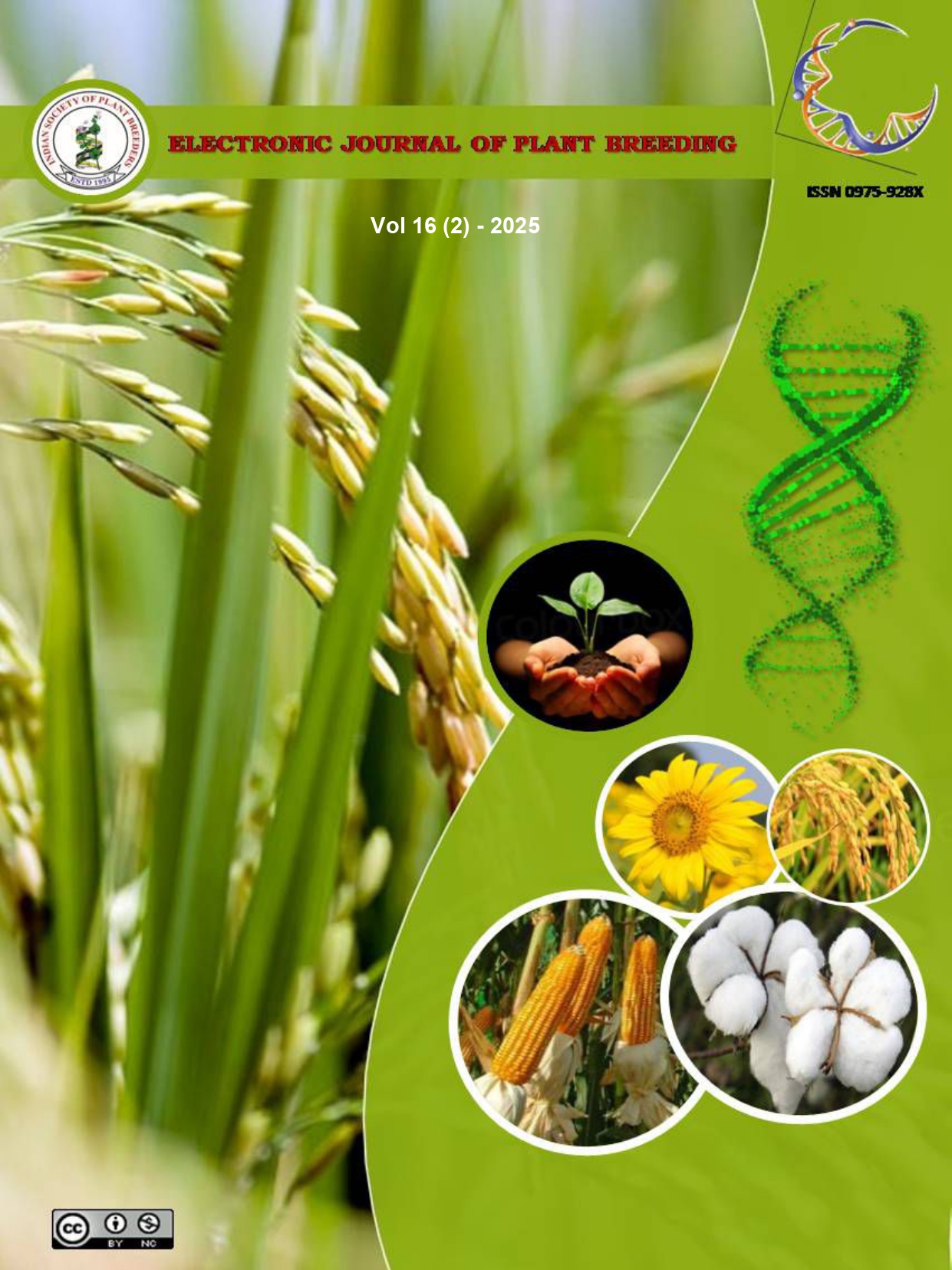Genetic divergence studies for yield and yield components in landraces of rice (Oryza sativa L.)
DOI: 10.37992/2025.1602.019
Abstract
The present investigation was carried out with 36 rice landraces along with four checks to estimate genetic divergence for yield and yield component. Principal component analysis showed that first four principal components viz., PC1, PC2, PC3 and PC4 with eigen value more than one and contributed 86.74% of cumulative variance. Hierarchical cluster analysis by ward’s minimum variance method grouped 40 genotypes including checks into six clusters. Of all the six clusters, cluster III was the largest comprising 14 genotypes followed by cluster I with 11 genotypes, cluster II with seven genotypes, cluster IV with four genotypes, cluster V with three genotypes and cluster VI with one genotype i.e., monogenotypic cluster. The 2D and 3D plots from principal component analysis and clustering pattern from hierarchical cluster analysis indicated that genotypes namely Arakuloya, Narayanakami, Kujipataliya, Tandasagar and Chintaluri sannalu were most divergence for most of the yield and yield components. Molecular diversity analysis using 15 SSR markers revealed that six markers viz., RM154, RM404, RM402, RM85 and RM21 showed polymorphism. Among these, the markers namely RM404 and RM21 recorded higher PIC values. These markers can be considered as more informative and capable of discriminating the genotypes more effectively.
Keywords: Genetic divergence, PCA, Hierarchical cluster analysis, Molecular diversity
Genetic divergence studies for yield and yield components in landraces of rice Oryza sativa L.
. 2025. Electronic Journal of Plant Breeding, 16 2, 241-248. Retrieved from https://ejplantbreeding.org/index.php/EJPB/article/view/5305It is certified that:
- The corresponding author is fully responsible for any disputes arising due to the publication of his/her manuscript.
- The article has been seen by all the authors who are satisfied with its form and content.
- The sequence of names of authors in the by-line is as per their relative contribution to this experiment, giving due credit to all scientists who made notable contribution to it.
- All the authors fully understand that inclusion of any other co-authors or exclusion of any co-authors is not possible once the article has been submitted to the journal.
- The corresponding author takes full responsibility for this article.
- The address of the organization where the research was conducted is given.
- The article is exclusive for this journal, and the results reported here have not been sent (and will not be sent during its consideration by this journal) for publication in any other journal.
- Authors agree to abide by the objective comments of referees and do agree to modify the article into a short note as per the recommendation, for publication in the Electronic Journal of Plant Breeding.
- If published in Electronic Journal of Plant Breeding, the copyright of this article would vest with the Indian Society of Plant Breeders, who will have the right to enter into any agreement with any organization in India or abroad engaged in reprography, photocopying, storage and dissemination of information contained in it, and neither we nor our legal heirs will have any claims on royalty.



